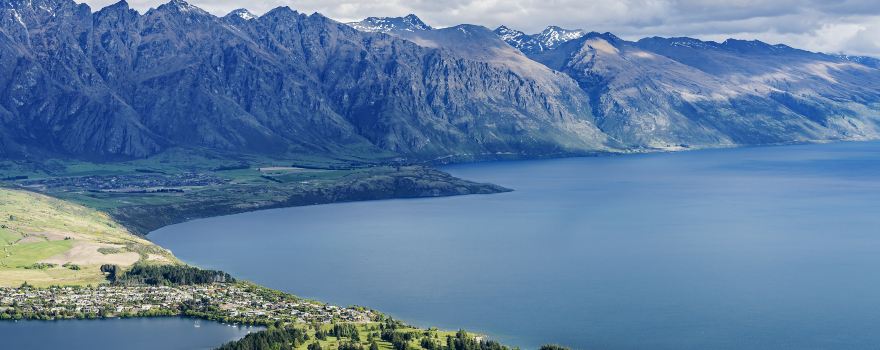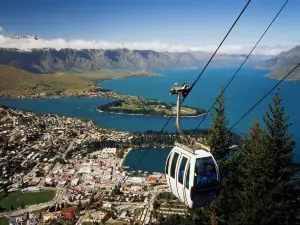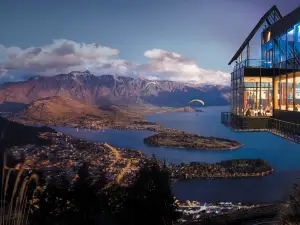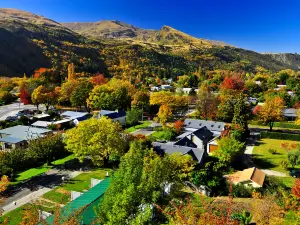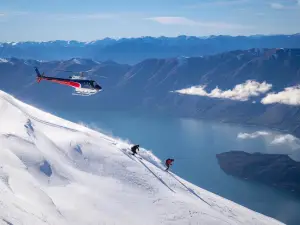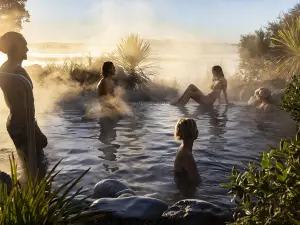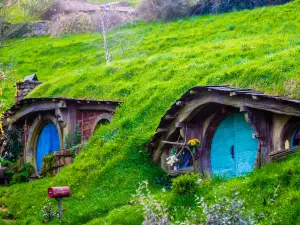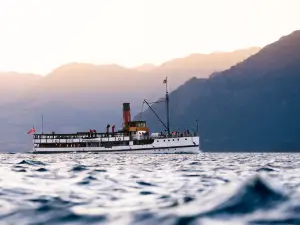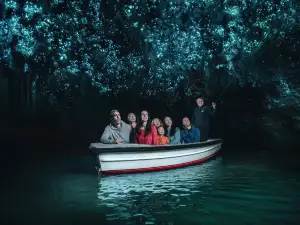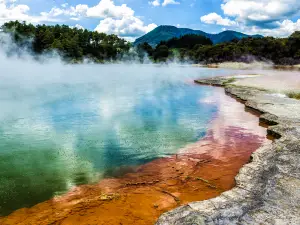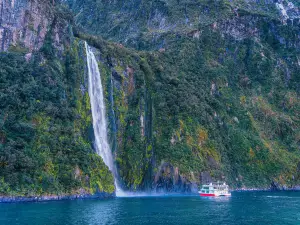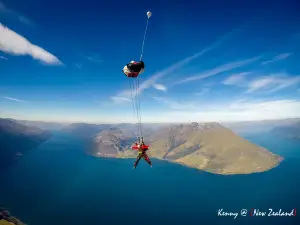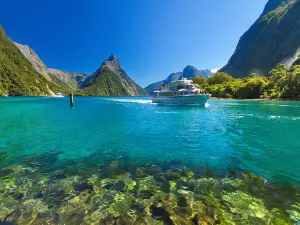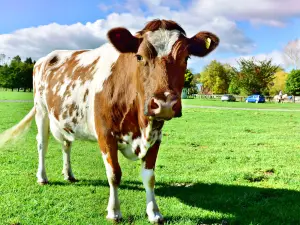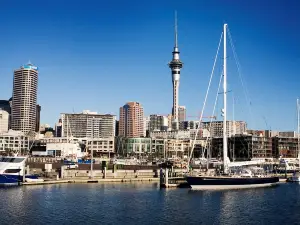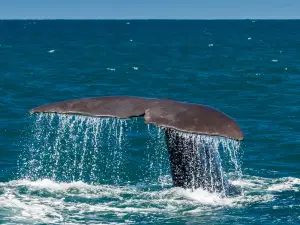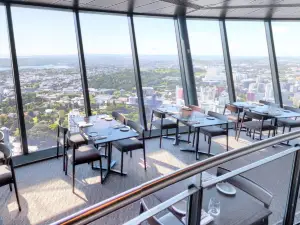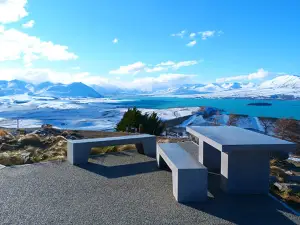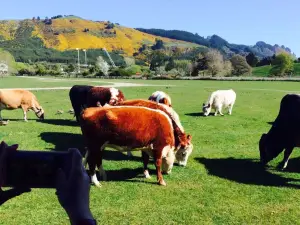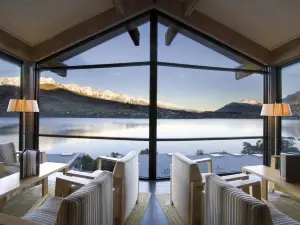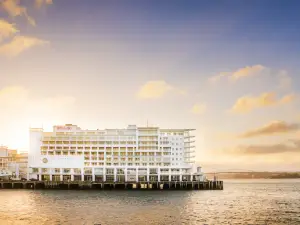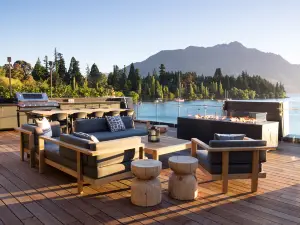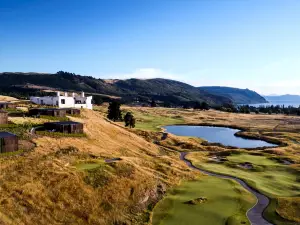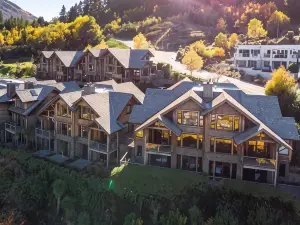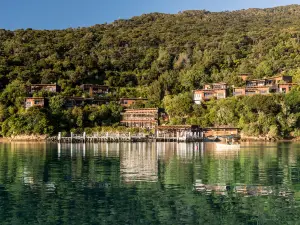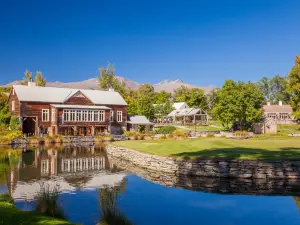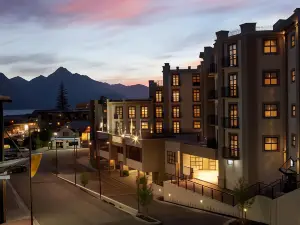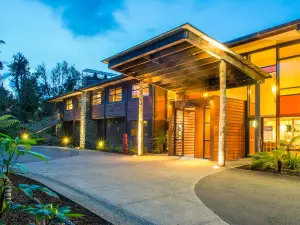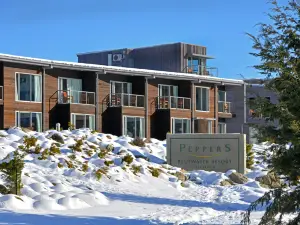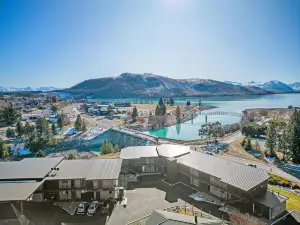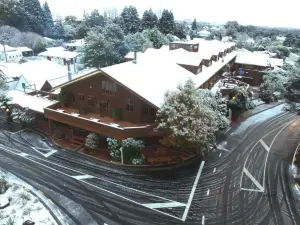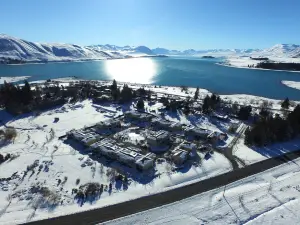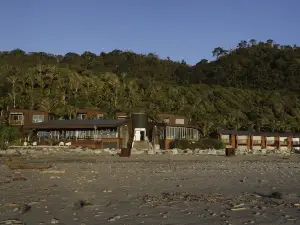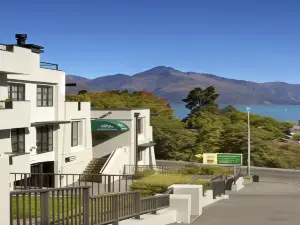New Zealand Independent Travel Guide (2025): Top Things to Do, Popular Attractions, Itinerary Planning, Accommodation, Food, Transportation, Weather, and More - Everything You Need to Know (Updated May, 2025) | Trip.com
About New Zealand
Recommended trip: 7–12 day(s)
Recommended trip: 7–12 day(s)New Zealand Local Experiences Map

Trending in New Zealand
New Zealand Local Travel Guide 2025
New Zealand Brief Guide
Nestled in the South Pacific, New Zealand offers a feast for the eyes with its diverse landscapes, from sandy beaches to towering mountains. Rich in Maori culture, it's dotted with national parks and adventure spots like Fiordland and the Bay of Islands. Milford Sound's dramatic peaks and Auckland's lively Sky Tower are iconic attractions. Nature lovers thrive in Abel Tasman National Park and Kaikoura's marine life. Hiking, geothermal explorations at Wai-o-tapu, and Hobbiton tours reveal the country's versatile terrain and cultural depth.
New Zealand Must-try Local Experiences
1. Experience the Majesty of Fiordland National Park Explore Fiordland National Park, home to stunning landscapes like Milford Sound and Doubtful Sound. Take a boat cruise, hike to scenic viewpoints, or kayak through pristine waters to see towering cliffs, waterfalls, and abundant wildlife. 2. Uncover the Geothermal Wonders of Rotorua Witness Rotorua's geothermal activity with bubbling mud pools, geysers, and hot springs. Visit Te Puia for Maori culture and the Pohutu Geyser, or relax in the Polynesian Spa's geothermal waters. 3. Journey to the Southern Alps Discover the Southern Alps and Mount Cook National Park, home to New Zealand's highest peak, Aoraki/Mount Cook. Enjoy hiking amidst glaciers, turquoise lakes, and alpine meadows, or try glacier hiking and scenic flights. 4. Explore the Waitomo Caves Venture into the Waitomo Caves, illuminated by thousands of glowworms. Take a boat ride through the Glowworm Grotto and marvel at the intricate cave formations. 5. Go Bungy Jumping and Jet Boating in Queenstown Queenstown, the adventure capital, offers bungy jumping, jet boating, white-water rafting, and skydiving, all set against stunning mountain scenery. 6. Experience the Hobbiton Movie Set Step into the magical world of The Lord of the Rings and The Hobbit at the Hobbiton Movie Set. Explore the Shire, visit Bilbo Baggins' hobbit-hole, and enjoy a drink at the Green Dragon Inn. 7. Explore the Bay of Islands The Bay of Islands is a maritime paradise with over 140 subtropical islands. Enjoy sailing, dolphin watching, and exploring historic sites like the Waitangi Treaty Grounds. 8. Visit the Museum of New Zealand Te Papa Tongarewa Explore Te Papa Tongarewa in Wellington, New Zealand's national museum. Discover the country's history, culture, and art through interactive exhibits and Maori treasures. 9. Witness the Balloons over Waikato Attend the Balloons over Waikato festival in Hamilton (March/April) to watch colorful hot air balloons take flight and enjoy family-friendly entertainment and the magical nightglow. 10. Sample New Zealand Cuisine Indulge in fresh seafood like green-lipped mussels and Bluff oysters, enjoy a traditional Kiwi barbecue, and don't miss hokey pokey ice cream. 11. Savor New Zealand Wine: Explore New Zealand's renowned wine regions like Marlborough and Central Otago. Sample world-class Sauvignon Blanc, Pinot Noir, and Chardonnay wines at vineyards. 12. Explore the Christchurch Arts Centre: Discover the Christchurch Arts Centre in restored heritage buildings. Find local crafts, art, and jewelry, and enjoy the vibrant atmosphere. 13. Explore Wellington's Cuba Street Cuba Street in Wellington is known for its eclectic mix of shops, cafes, and street performers. It's a vibrant area to explore and find unique fashion, art, and vintage items. 14. Capture the Starry Sky at Lake Tekapo Visit Lake Tekapo, renowned for its clear skies and lack of light pollution, to capture stunning photographs of the Milky Way and constellations. 15. Drive the Scenic Routes Embark on a road trip along New Zealand's scenic highways like the Southern Scenic Route. Enjoy breathtaking views, charming towns, and hidden gems along the way. 16. Take a Scenic Drive on the Great Coast Road The Great Coast Road between Westport and Greymouth offers one of New Zealand's most scenic drives. Enjoy breathtaking views of the rugged coastline, lush rainforests, and the Tasman Sea. 17. Go Whale Watching in Kaikoura Kaikoura is one of the best places to see sperm whales year-round. Join a whale-watching tour to get up close to these magnificent creatures and other marine life like dolphins and seals.
New Zealand Best cities to visit
Established by stiff upper lipped English settlers and known as the Garden City for its abundance of trees. Christchurch is a friendly city situated at the edge of the Canterbury plains. In February of 2011, this hardy city on New Zealand's South Island was destroyed by an earthquake. The recovery is in progress and bolstered, by the historic strength of the inhabitants. The business student youth culture and tourism industry are sure to assist in the rebuilding of the town. The top attractions in town are Cathedral Square, The Botanic Gardens, and Sumner Beach.
New Zealand Transportation
New Zealand is predominantly accessed by air, with international flights from North America, Europe, Australia, and Asia connecting to its major airports, particularly Auckland International Airport. Direct flights and routes with layovers are available from cities worldwide including Los Angeles, San Francisco, Houston, and Australia with shorter flight durations. Additionally, there are cruise options available between Australia and New Zealand.
New Zealand Best Time To Visit
The best time to visit New Zealand is during the summer months of December to March. During this period, you can expect long, bright, sunny days ideal for exploring the beautiful beaches and engaging in numerous outdoor activities like hiking and mountain biking. Alternatively, visiting in March provides pleasant temperatures with fewer crowds, offering a chance for quieter exploration and better availability in boutique lodges.
New Zealand Travel Tips
1. Book Milford Sound Cruises and Popular Treks in Advance: Milford Sound cruises and popular treks like the Milford Track hut should be booked in advance, especially during peak seasons. Early planning ensures you secure your preferred dates and avoid disappointment. 2. Be Prepared for Rapid Weather Changes: New Zealand's weather can change quickly, especially in mountainous regions. Pack layers and waterproof clothing to stay comfortable. Be prepared for cold, wet weather, and monitor weather conditions regularly to avoid being stranded or injured. 3. Check for Conservation and Seasonal Closures: Certain hiking trails and natural reserves in New Zealand may close for conservation work or due to weather conditions. For example, the Great Walks may have seasonal closures, and some trails are closed to protect kauri trees from disease. Always check the status before heading out, especially during winter months when many alpine areas are inaccessible. 4. Respect Maori Culture: The Maori culture is an integral part of New Zealand. Show respect by not touching sacred objects, asking for permission before entering Marae (meeting grounds), and following local customs. 5. Stay Informed About Earthquakes: New Zealand is prone to earthquakes. Familiarize yourself with local emergency procedures like Drop, Cover, and Hold. Identify safe spots in your home, such as under sturdy furniture, and stay away from windows. Do not run outside during shaking. After the quake, check for injuries and hazards, and follow local advisories. 6. Left-Side Driving: New Zealand drives on the left side of the road. Take extra care if you're not used to this, especially on rural roads which can be narrow and winding. Opt for an automatic car, drive with caution, and use memory aids like 'Left is best'. Familiarize yourself with roundabouts and intersections, and always stay focused. 7. Drone Usage Regulations: Flying drones in New Zealand is regulated by the Civil Aviation Authority. Follow rules: fly only in daylight, below 120 meters, and keep drones in sight. Avoid flying over people or private property without consent, and stay 4 km away from aerodromes unless authorized. Check local airspace restrictions and obtain necessary permissions for controlled or special use airspace. 8. Carry Reusable Bags: New Zealand has banned single-use plastic bags. Carry reusable bags for shopping to avoid any inconvenience. 9. Strict Biosecurity Laws: New Zealand has strict biosecurity laws to protect its unique ecosystem. Declare any food, plants, or animal products upon arrival to avoid fines. Use marked amnesty bins for disposal. Complete a New Zealand Traveller Declaration before arrival and be aware that even accidental false declarations can result in penalties. 10. Freedom Camping Rules: Freedom camping is allowed in many areas but regulations vary. Use designated sites, ensure your vehicle is self-contained with a fixed toilet, and always follow the 'Leave No Trace' principles to protect the environment. Check local council and DOC rules before camping.
New Zealand Useful Guide
In New Zealand, in case of emergencies including medical, fire, or police assistance, dial 111; this service is available free of charge and can be accessed even with a mobile phone lacking credit. For non-emergency situations, contact the police at 105. Driving safety is paramount; always adhere to the speed limits and drive on the left side of the road. Be mindful of local road conditions, particularly in rural or mountainous areas, and adjust your speed accordingly. Regarding natural disasters, it's essential to stay informed through local media and Civil Defense advice. Be prepared with an emergency kit and understand local evacuation routes, especially if residing or traveling in areas prone to earthquakes, tsunamis, or other natural events.
Trip.Best: New Zealand
Popular Destinations
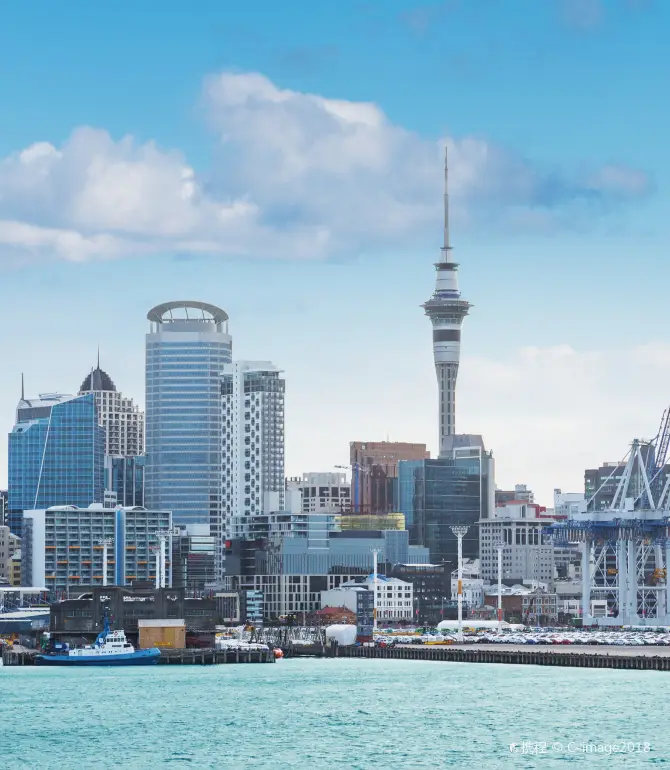
Auckland
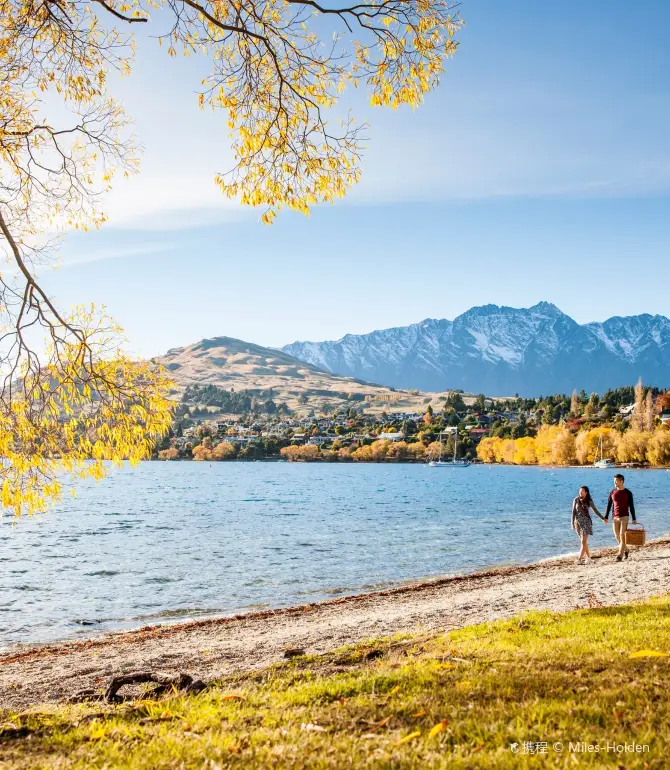
Queenstown
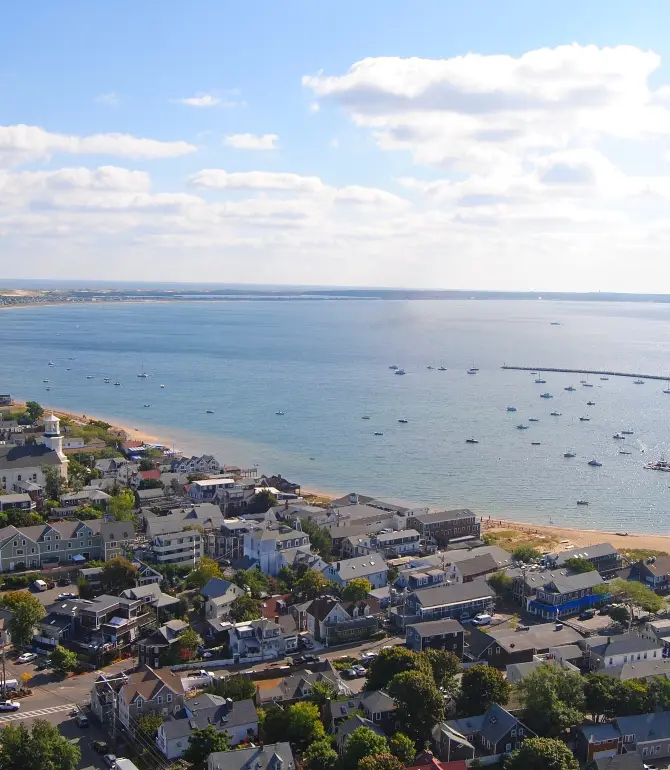
Christchurch
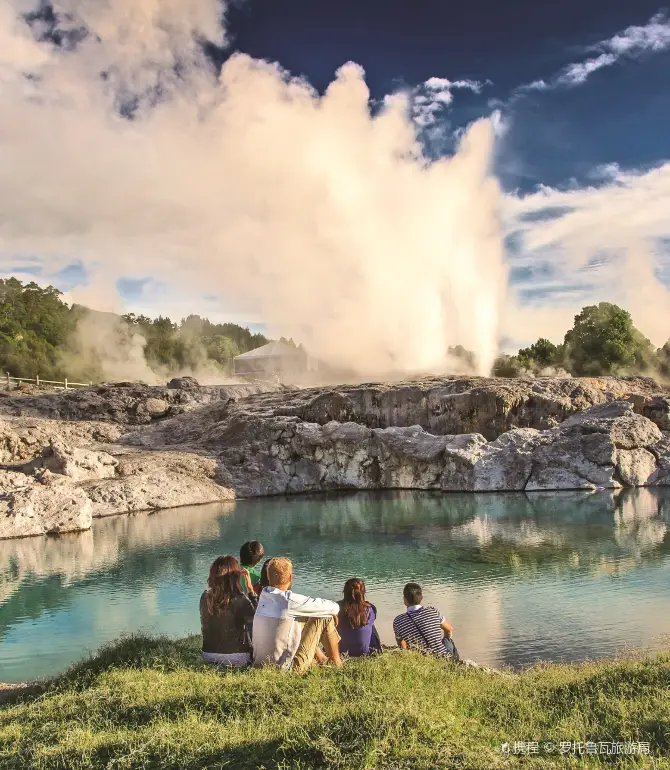
Rotorua
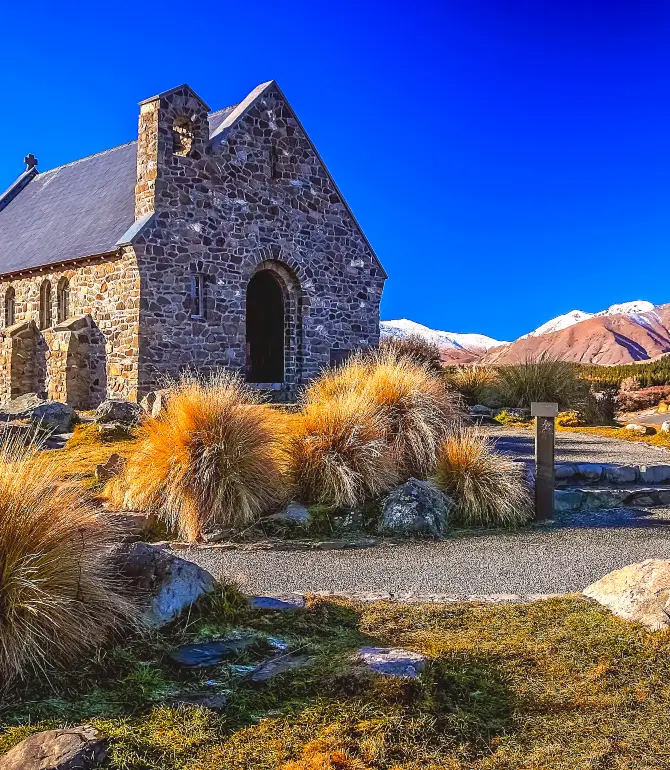
Lake Tekapo

Wanaka
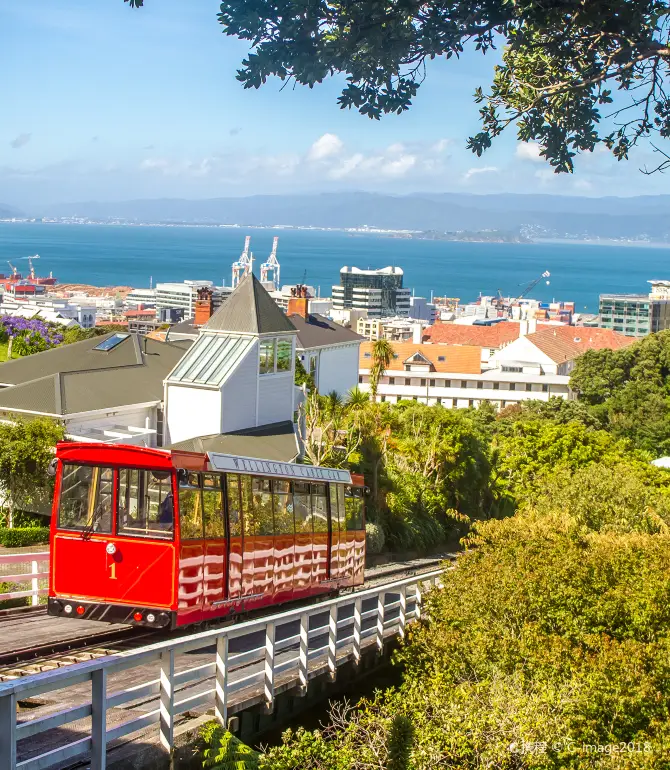
Wellington
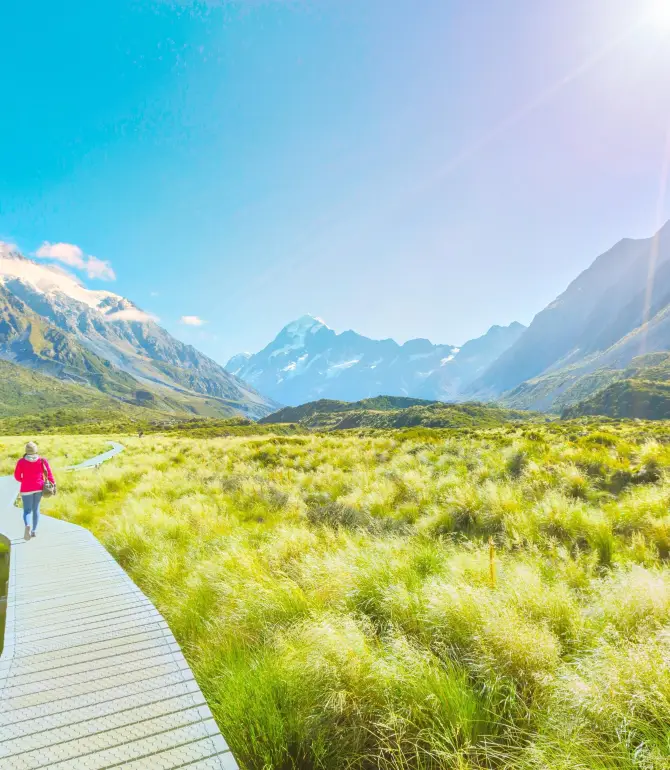
Mount Cook National Park
Things to do in New Zealand
What to Do
What to Eat
New Zealand Moments: Through Travelers' Eyes

Wellington: A 5-Day, 4-Night Magical Journey to Unlock the Unique Charm of New Zealand's Windy City

Skydiving in Auckland | A Once-in-a-Lifetime Thrill

A Solo Trip to New Zealand!

Hobbiton Movie Set, NZ

New Zealand Glacier Hiking | Guide

Queenstown

New Zealand's Tasman Glacier: A Magnificent Journey Through Ice and Snow

🇳🇿 Marokopa Falls 📍Waitomo
Best of New Zealand
Site Operator: Trip.com Travel Singapore Pte. Ltd.
